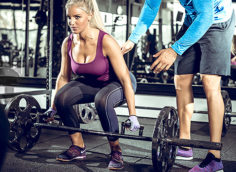This exercise teaches you how to dial in your horizontal pulling technique. Any faulty mechanics, movement dysfunction, or flawed activation patterns will cause you to lose your balance. To do it, you'll have to make continuous adjustments and technique corrections until every component of body mechanics, from head to toe, is honed in.
Anything less than perfection will result in loss of body control and inability to perform the movement. It provides you with enough sensory feedback and internal cuing to gradually self-correct and auto-regulate body positioning. As a result, the quadruped row addresses numerous form issues:
- Eliminates over-rowing and excessive range of motion in the contracted position.
- Eliminates overstretching and excessive protraction in the bottom position.
- Reduces excessive momentum and "top rock." Eliminates low back compensation and excessive lumbar extension.
- Improves 3D glenohumeral joint mechanics by promoting optimal depression, retraction, and medial rotation of the scapula.
- Reinforces proper elbow tuck and optimal arm mechanics.
- Increases core activation.
- Eliminates cervical compensation patterns in the neck and head.
- Improves full body tension and spinal rigidity.
- Eliminates excessive body rotation common with single-arm rows.
- Promotes proper grip mechanics by producing optimal stacking of the shoulder, elbow, wrist, and hand.
- Teaches strong muscle-mind connection with the lats.
- Produces larger range of motion than most free-weight rows due to the rigid parallel torso position.
- Prevents and eliminates spinal flexion. Improves low back health and back pain.





